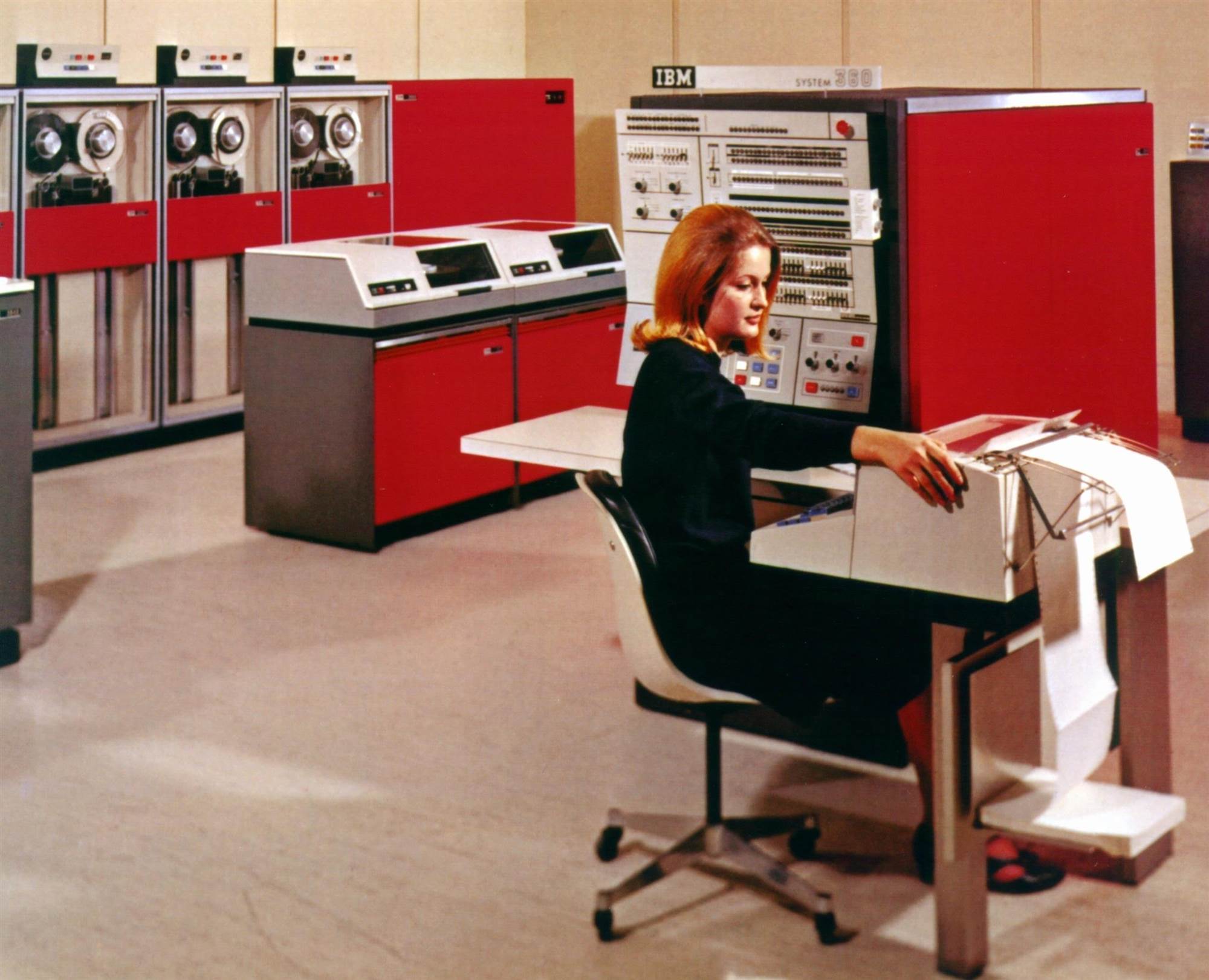Preamble
The Australian Computer Society (ACS) was formed 50 years ago, when the various state computer societies joined forces.
To mark the occasion, the ACS has initiated a heritage project to honour the many individuals who have contributed to the growth of the ICT profession in Australia.
At the heart of the project is a history of computing in Australia. It is not just a history of the ACS, but the history of a profession.
Australia has the longest computing history of any country, excepting the US and the UK, and CSIRAC in the Museum of Victoria is the oldest computer still in existence.
Chapter 24: A 1970s snapshot
Australia entered the 1970s with a vibrant and growing computer industry. Dreams of local manufacturing were being kept alive by a few intrepid companies and individuals (we will cover these in a later chapter), but the fiercest competition was between the major multinational hardware suppliers.
These foreign vendors, and a host of software suppliers, were fighting hard for supremacy as virtually all large companies and major government departments computerised. Many were now onto their second generation of machines. The highest stakes, and the largest orders, were for mainframe computers, the battleships of the computer industry. Minicomputers were becoming a major market, but mainframes were where most of the action was.
IBM remained by far the largest vendor, but its dominance was being challenged on many fronts. Early competition came from a group of vendors known as the BUNCH – a clever acronym for Burroughs, Unisys (Sperry’s mainframe brand name), NCR, Control Data, and Honeywell. Control Data had made a major play in Australia in the 1960s (see Chapter 12), but its light faded in the 1970s and 1980s. The rest of the BUNCH also had sporadic success in Australia, but they too declined over time.
There were other mainframe suppliers in the US in the 1960s, such as RCA and General Electric, but the US industry rationalised into IBM and the BUNCH in the late 1960s and early 1970s. It didn’t last long. By the mid 1980s, the BUNCH was no longer a meaningful term. Two of them merged in the 1980s (Sperry and Burroughs) and one of them (Control Data) eventually disappeared completely. None of them survived as serious mainframe manufacturers.
With the BUNCH’s decline, IBM’s biggest challenge came from two non-US mainframe companies, Japan’s Fujitsu and the United Kingdom’s ICL. Fujitsu aggressively entered the Australian market in 1973 and beat IBM in some major deals on its home turf. Fujitsu subsequently diversified into services and is now one of Australia’s largest computer companies.
ICL was formed in 1968 when all of the UK’s computer suppliers, at the insistence of the government, merged as a single company. The idea was that the combined operation would have critical mass and make Britain an international information industry powerhouse. It didn’t work. ICL was eventually acquired by Fujitsu, progressively through the 1980 and 1990s, but in the 1970s and 1980s it was a major player on the Australian scene. ICL was especially dominant in Queensland, and had major users in most other states.
Other threats to IBM came from the so-called plug compatible manufacturers (PCMs), who copied IBM’s hardware designs and were able to offer similar equipment at a much lower price. We will examine individual vendors in later chapters.
In its January 1970 edition, Australian business magazine Rydges (later to evolve into Business Review Weekly) published a special feature on computers. It was based on a major survey the magazine had done, which counted 813 computers installed in Australia.
The survey divided them up into four price ranges: under $100,000, 100,000 to $250,000, $250,000 to $500,000, and over $500,000. It also broke them down into industry sectors.
.jpg)
The article paints a fascinating picture of the Australian computer industry at the beginning of the 1970s:
“The Australian computer market, after logging a solid 40% increase in the last 12 months, has risen to become one of the major capital goods markets in the country. Estimated total value of the 813 computers currently in use in Australia is $187 million.
“This is also one of the most open computer markets in the world. The industry goliath IBM, which in the USA and some other countries has up to 70% of the market, has managed to gain only 40.1% here. Some of the bigger chunks of the remaining sales are gone to ICL (13.1%), Control Data (10.9%), Honeywell (8.3%) and General Electric (6.3 %).
The reason for the relative openness of the Australian market lies in the fact that government is such a heavy spending computers in Australia. About 25% of the money spent on computers belongs to either Commonwealth, state or local government.”
Rydges also published a breakdown by vendor:
.jpg)
IBM at just over 40% of the market followed by ICL and Control Data. Control Data had only 36 computers installed, compared to IBM’s 272, but its machines were on average much larger and more costly. It was especially strong in universities and had large installations in the Census Bureau and CSIRO.
In 1970, Honeywell acquired General Electric’s computer business. The combined value of the two vendors’ installed base would move it into second place, ahead of ICL. DEC, which led the minicomputer charge in the late 1960s, had 97 installed computers by 1970, but their average value was only $97,000, which gave it just a 4.7% market share (by installed value).
Sperry Univac had the largest average cost per computer of any vendor, and was especially popular as time-sharing machines for large computer networks. Burroughs’ biggest strength was in data processing bureaus. There were 56 machines from an assortment of smaller vendors, most of them small computers.
Veteran ICT journalist Graeme Philipson is researching and writing the Heritage Project book, which is due for release on the 50th anniversary of the formal incorporation of the ACS, on 3 October 2017.
The project also involves the creation of a ‘virtual museum’, cataloguing hardware and other artefacts, and collecting and curating documents on the history of the industry, including oral histories of as many people as possible.
Please get in touch with Graeme if you would like to contribute, at [email protected]
Do you have early memories of the ICT industry in Australia? Help us make history by sending us your story! Record or write your memories to be included in our historic ACS Heritage Project. Details here.
Previously published:
Chapter 23: ACS at home and abroad
Chapter 22: The early years of the Australian Computer Society
Chapter 21: Other Australian universities
Chapter 20: University of Melbourne and Monash
Chapter 19: Sydney University and UNSW lead the way
Chapter 18: Computing in the Australian Government
Chapter 17: Trevor Pearcey and the birth of CSIRONET
Chapter 16: Enter the minicomputer – DEC comes to Australia
Chapter 15: The IBM S/360 in Australia
Chapter 14: IBM redefines the computer industry
Chapter 13: Control Data Australia (part II)
Chapter 12: Control Data Australia (part I)
Chapter 11: The Australian Computer Society
Chapter 10: Five Computer Societies
Chapter 9: Australian made, Australian designed
Chapter 8: Australia's Computer Industry in 1962
Chapter 5: SILLIAC and the Snowy Mountains Scheme
Chapter 3: Harry Messel and the birth of SILLIAC










